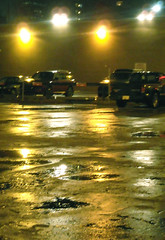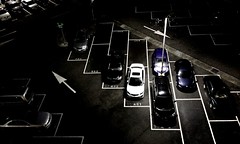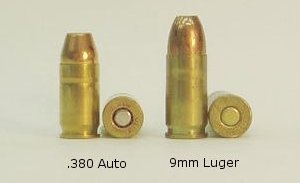| (Photo credit: useless no more) |
I'm just going to tell you the story, then I'll break it down and give you some insights.
Last night fairly late, tired and ready for the day to be over, I left the dance studio with my daughter, and her medical alert dog, T. My arms were full. I had T. on his lead, his "place" which is a large quilted pad, my backpack with my computer in it, and my car keys. I moved into the parking lot with my teen yammering about her costume fitting, walking behind me. We walked toward my mini-van that was parked nose in on the side of the lot next to the woods.
As we moved forward, away from the studio and the lights, my focus was on a man that I saw easing quietly to the side of my van. I stopped short. I hadn't seen him move into the woods. There was a large black truck in the driving space just to my left. I gave myself a second to assess. Did the truck belong with that man? The truck's door popped open, and I took a step back to gain distance. I immediately recognized the man emerging as one of the other dancers' fathers.
"Where'd he go?" he asked.
"To the right. The light hasn't come on, so he's not in my vehicle."
We moved cautiously together to see. And there was the stranger in all of his glory, leaning against my door, 6'4", out of his freaking mind on some drug, penis in hand.
At that point I wanted out of there. I hand unlocked the door, shoved everything in, including my kid and her dog. I hit the lock button and peeled out of there with Crazy-man holding on to my door handle and explaining to me about his penis in a very loud voice. I had a window-breaker, a very nasty tool that would easily crack a skull, in my hand by this point and thought, "Wow, I'm doing everything wrong."
I drove home and had a rum and coke.
This did not go well. And as a trainer, I would say I did not perform well. I want to break this down so if this is you, you can do better than I did. And if this is your character? Well, good luck to her.
| Parking Lot at Night (Photo credit: VinceFL) |
1. I ALWAYS park pointing
outward, (first mistake was to
break my rule) because in an
emergency
you don't want to be backing up
(ask my friend Cathy who blared
her horn, so I didn't smash into her
new car in my haste).
2. Park under a light/camera and
away from landscaping that can
obscure your view.
3. No matter how tired and
distracted you are, you must
remain vigilant. I make a habit of
scanning every time I'm out in
public. For decades I have been
scanning, but this night, it made the
difference. My daughter didn't
walk, alone, around to the passenger side to find the crazy man with his dick in his hands when mom was
out of reach.
4. Develop a strong arm. Your non-dominant arm should have your carried items, your keys should be easily
accessible, and your weapon should be in your dominant hand. I have several blog articles about weapons
that are easy to carry, as well as their pros and cons.
* Kuboton
* Asp batton
* Stun Guns and Tasers
* Pepper Spray and Mace
* Conceal carrying a gun
5. Move with focus to your car. Everyone in, doors locked immediately, and pull out. This is not the time to
text and read mail etc.
What does it mean to move with focus?
| Parking Lot at Night (Photo credit: David H. Chu) |
who is moving in a way that your paths will cross.
If someone is sitting in the passenger seat next to
your driver's door, you may want to get in from
your passenger side or go get someone to escort
you.
3. Be aware if the cars beside you, or your car
allows enough space for someone to easily lie
underneath. Glance under the vehicles as you
approach.
3. Briefly check the floor boards front and back for
unexpected visitors. and get in quickly.
God forbid something go wrong for you, but if someone tries to abduct you in the parking lot here is a LINK with some strategies.
As you drive home, be aware if anyone is following you. This happened to me once, so I drove an extra block and visited the fire station.
Now as you go through a list of possible weapons, everything from concealed guns to knives, from electronic weapons to mace, you may feel uncomfortable with any or all of them. Babies in arms, curious children, and pets, as well as a willingness to use a weapon and having the training to do so effectively come into play.
At night, I am now carrying (except for last night - when it would have been the perfect weapon) a high powered handheld (4") flashlight with enough lumens to blind a person if it is dark outside.
* A lumen is simply the measurement of a light's brightness.
* A high-powered tactical flashlight is easy to find on the web. I happen to use Autocraft.
* In a dark environment, the light is intense enough to blind someone. They cannot see past the light to know
what you are doing. It is disorienting and gives you an authoritative posture.
Your number one weapon is your awareness and focus.
Your number two weapon is your posture and your voice quality
Though maybe yelling at the guy, "Hey! Get off my car!" was not the very best tactic. The best tactic at that point was to back away and go to the studio to call the police. But hey, hind-sight...
And it's always good to have a physical weapon at the ready, something you are comfortable with deploying be it a high pitched siren or bear spray.
| (Photo credit: Wikipedia) |
The dance school owners did call the police. When the cops arrived, they found the guy with his pants around his ankles, his shirt pulled up, lying in my parking spot, rubbing his belly next to a pile of poop. The crazy guy spent the rest of the night in jail.
Please let me know if you have any questions, and I will do my best to help.























